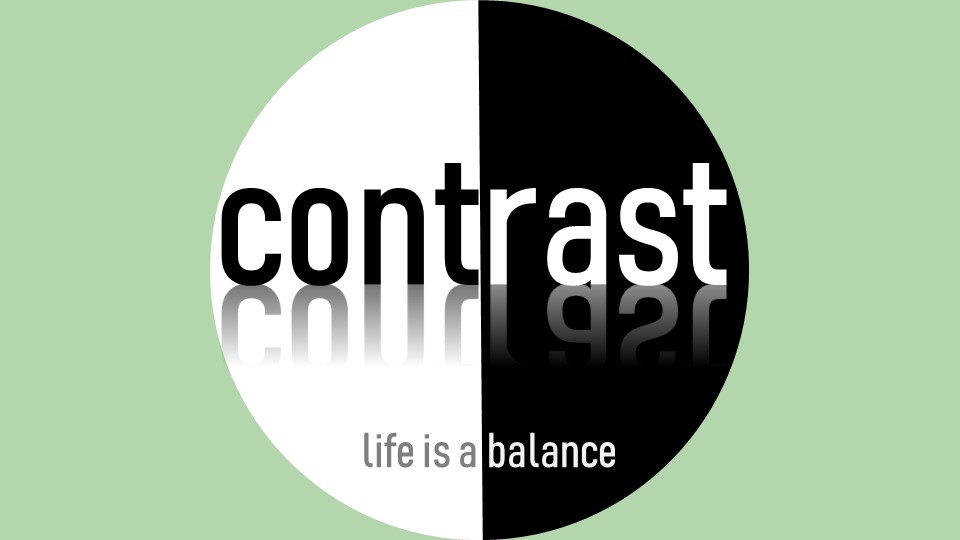There is an adjustment setting on the television set or computer monitor that can raise or lower the contrast. Most of the time it is helpful to set the contrast fairly high. Doing so makes the bright parts brighter and the dark parts darker and helps us see the image on the screen a bit better. There are times when turning the contrast down can be helpful too. Photo or video software can adjust the contrast of the image with similar results. When a picture is going to be in the background and not the focus of what is on the screen, decreasing the contrast helps it become less important visually. That is often done with a background image in a presentation, for example. The image may add to what is being presented, but it is less important than the foreground material.
Life is a balance. We experience things that stand in contrast to each other: life and death; old and new; good and evil; dark and light; and temporary and eternal are a few examples. There are many others, of course. Our faith relationship with God is lived in a world of contrast. We hold in tension things that seem to conflict with each other – like life and death. We know God is good, but we live in a broken world and experience evil. Everything we can experience with our senses seems to be temporary, yet God is eternal.
As we see the contrast between these components of our lives, we can get a sharper view of God’s nature and our relationship with Him. We trust His word that describes eternity, even when we only experience the temporary. We believe in His goodness, even in the brokenness and evil we know all too well. We receive the life He offers, even in a world of death and decay. Paul uses contrast in his writings to teach the Corinthians (and us) about life and faith. He balances sin and grace, life and death, old and new.
In this message series we are going to explore some of these contrasts and gain insights into what God teaches us, even through what we experience in life.
Turning up the contrast,
Pastor John
